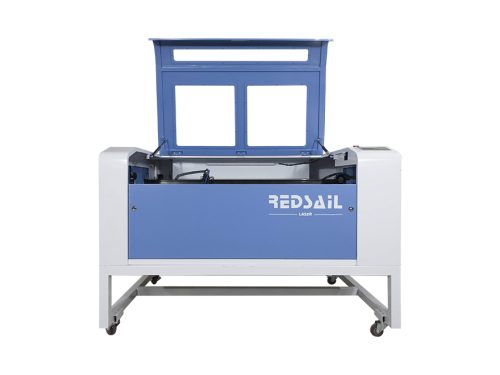
There are two types of laser cutting techniques: one is pulse laser suitable for metal materials. The second is that continuous laser is suitable for non-metallic materials, which is an important application field of laser cutting technology.
The key technologies of laser cutting machines are the comprehensive technology of light, machinery, and electricity. The parameters of the laser beam, the performance and accuracy of the machine and CNC system directly affect the efficiency and quality of laser cutting. Especially for parts with high cutting accuracy or large thickness, it is necessary to master and solve the following key technologies:
Focus position control technology
One of the advantages of laser cutting is its high beam energy density, usually/cm2. Due to the inverse ratio between energy density and area, the diameter of the focal spot should be as small as possible to produce narrow seams; The diameter of the focal spot is also proportional to the focal depth of the lens. The smaller the depth of focus of the focusing lens, the smaller the diameter of the spot. However, there is splashing during cutting, and the lens can be easily damaged if it is too close to the workpiece. Therefore, high-power CO52 laser cutting machines are widely used in industrial applications with a “~7.5” (~) focal length. The actual focal spot diameter ranges from 0.1 to 0.4mm. For high-quality cutting, the effective depth of focus is also related to the lens diameter and cutting material. For example, when cutting carbon steel with a 5 “lens, the focal depth is within 2% of the focal length, which is about 5mm. Therefore, controlling the position of the focal point is more important than cutting the surface of the material. In principle, considering factors such as cutting quality and cutting speed, 6mm metal material with surface focus; 6mm carbon steel, surface focal point; 6mm stainless steel with focus below the surface. The specific size was determined through the experiment.
There are three simple methods to determine the focal point of industrial production:
(1) Printing method: Move the cutting head from top to bottom, print the laser beam on the plastic board, and focus on printing the minimum diameter.
(2) Oblique plate method: Pull a plastic plate horizontally at an angle to the vertical axis to find the smallest part of the laser beam as the focal point.
(3) Blue Spark Method: Remove the nozzle, blow air, and pulse laser on the stainless steel plate to move the cutting head from top to bottom until the maximum blue spark focus is reached. The flying light path cutting machine has different beam sizes before focusing due to the divergence angle of the beam and the different cutting time lengths at the near and far ends. The larger the diameter of the incident beam, the smaller the diameter of the focal spot. To reduce the changes in the size of the focusing spot caused by changes in the beam size before focusing, domestic and foreign laser cutting system manufacturers have provided users with some specialized equipment:
(1) Directional light tube. The output end of the CO2 laser has added a parallel light tube, which increases the diameter of the expanded beam and reduces the divergence angle, making the size of the near and far focused beams close to the same within the cutting working range.
(2) Add an independent moving lens on the cutting head, and the Z-axis of the distance between the control nozzle and the material surface is two independent parts. When the machine tool workbench moves or the optical axis moves, the beam also moves from the near end to the far F-axis, so that the diameter of the focused beam remains consistent throughout the entire processing area. As shown in Figure 2. The daily profit of laser cutting machines.
(3) Control the water pressure of the focusing mirror (usually a metal reflective focusing system). If the beam size decreases before focusing, the diameter of the focusing point increases, and the water pressure changes automatically, the focusing curvature decreases.
(4) Increase the compensation optical path system in the x and y directions of the flying optical path cutting machine. When the optical path at the far end of the cutting increases, the compensation optical path shortens; On the contrary, when the cutting near end optical path decreases, the compensation optical path increases to maintain consistent optical path length.










